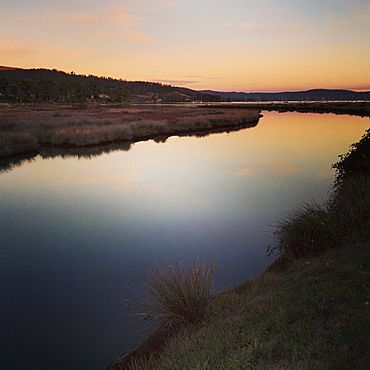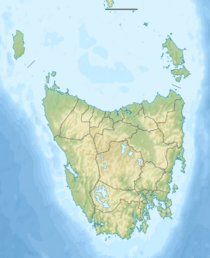Port Cygnet Conservation Area facts for kids
Quick facts for kids Port Cygnet Conservation AreaCygnet, Tasmania |
|
|---|---|
|
IUCN Category V (Protected Landscape/Seascape)
|
|

Port Cygnet Conservation Area
|
|
| Nearest town or city | Cygnet, Tasmania |
| Established | 18 June 1952 |
| Area | 103.1 km2 (39.8 sq mi) |
| Website | Port Cygnet Conservation Area |
| See also | Protected areas of Tasmania |
The Port Cygnet Conservation Area is a special protected place in Tasmania, Australia. It's located near the town of Cygnet, about 65 kilometers (40 miles) southwest of Hobart, the state's capital city. This area covers about 103 hectares (254 acres) and includes an open estuary, which is where a river meets the sea.
This conservation area is very important because it's a listed wetland. It's also the only Marine Protected Area (MPA) in its region that protects an open estuary environment. This means it helps keep the ocean and coastal areas healthy.
History of Port Cygnet
The Port Cygnet area was first set aside as a wildlife sanctuary in 1952. This was done to protect the shoreline and the important wetlands. Later, in 2009, the marine (ocean) part of the area was officially named the Port Cygnet Marine Conservation Area. This extra protection helps keep the waters and the creatures living there safe.
Home for Birds
This conservation area is a safe haven for many different kinds of birds. It's especially important for birds that travel long distances, known as migratory birds.
Migratory Birds
Some of the amazing migratory birds that visit Port Cygnet include:
- The Latham's snipe (Gallinago hardwickii)
- The Great egret (Egretta alba)
- The Greater crested tern (Sterna bergii)
These birds rely on places like Port Cygnet to rest, feed, and sometimes even breed during their long journeys.
Wetland Birds
The wetlands within the conservation area are also home to other unique bird species. You might spot birds like:
- The Pied oystercatcher (Haematopus longirostris)
- The majestic White-bellied sea eagle (Haliaeetus leucogaster)
Protecting this area helps make sure these birds have a safe place to live and thrive.


